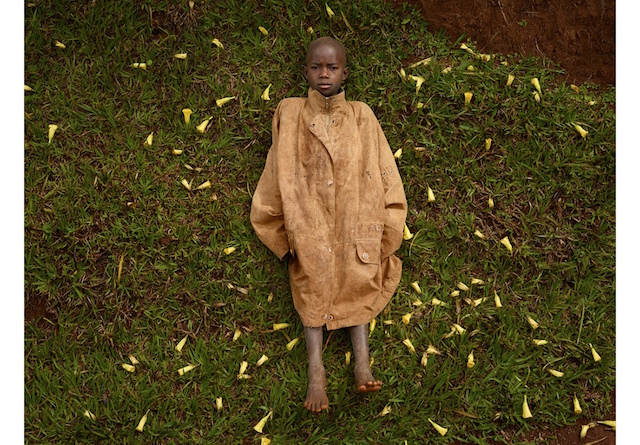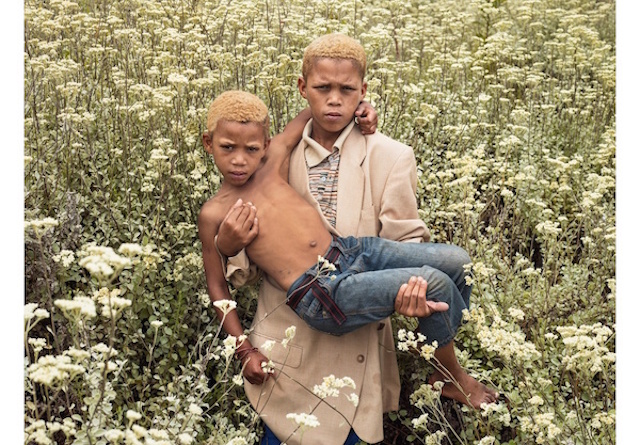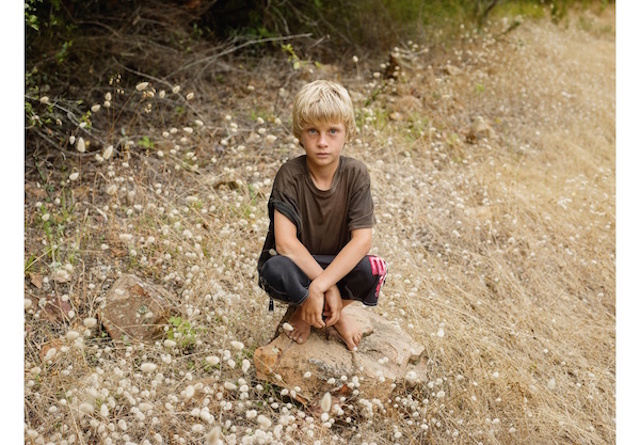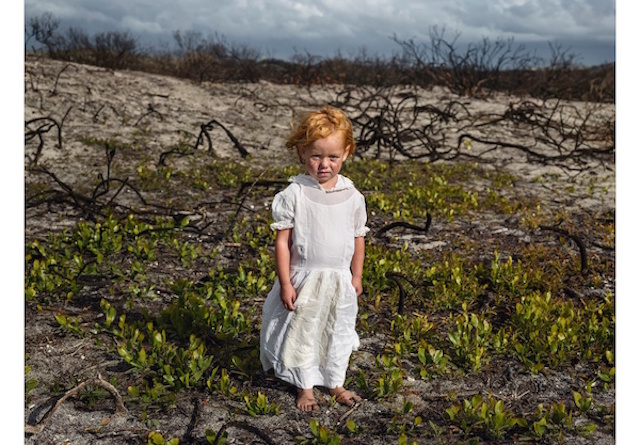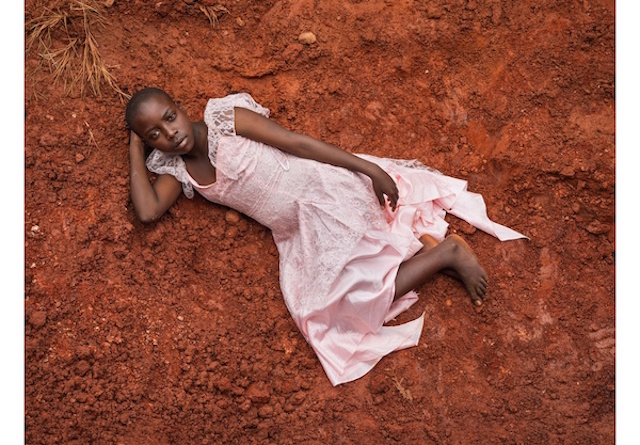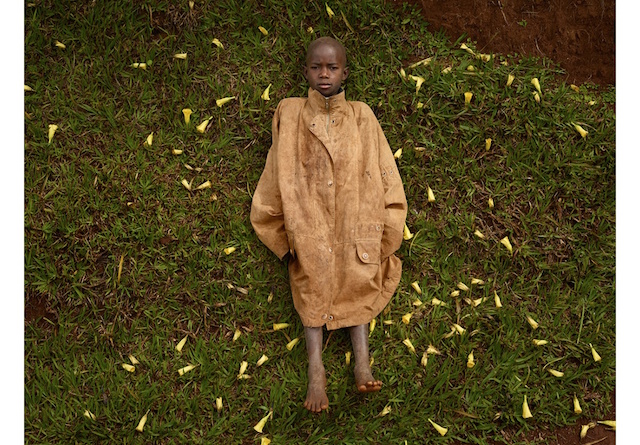In late April, 1994, South Africa held its first multiracial elections. For four days, millions of new citizens stood in long, orderly queues, waiting to cast their vote for president. South Africa was lauded as a nation resurrected, reborn; and, in the euphoria, a name was given to the generation brought up after apartheid. They would be called “Born Frees.”
Three weeks earlier, in Rwanda, a genocide had begun. It was the culmination of nearly a century of ethnic tension between Hutus and Tutsis, the seeds of which were planted by colonial rule. By June, over half a million people were murdered and two million others had fled the borders, leaving Rwanda’s mountains filled, as one journalist described, with the “indescribable quiet of a country where nobody was home.” A name was also given to the children born of this moment, but specifically to the thousands born by rape: enfants mauvais souvenirs, or children of bad memories.
These two events—a collision of our most extreme conceptions of trauma and renewal, displacement and return, mass complicity and mass resistance—frame Pieter Hugo’s newest photographic exhibit at the Stevenson Gallery in Cape Town, titled, simply, 1994. But the images are less concerned with these moments in history than with their afterlives: the physical and psychic worlds formed in the imprints left by apartheid and genocide.
1994 is composed of seventeen portraits of children born in South Africa and Rwanda after 1994. They form a generation laden with hope, introduced into the world during a time of reconciliation and nation-building. But these children also inherited a scarred terrain: in South Africa, a map whose property lines remained contoured by three centuries of white minority rule. In Rwanda, a landscape eroded by conflict, in which traces of genocide lay barely camouflaged.
In the wake of regimes that wrote themselves onto both land and bodies, the most innocent dwelling place could become a site of contradiction: at once a refuge and a crime scene, a motherland and a foreign country. Even after borders are lifted and official healing processes begin, such contradictions linger, the memories of them passed down from parent to offspring. 1994 is a study of the latest generation of Rwandans and South Africans and the landscapes they inhabit, an attempt to give form to new concepts of “home” that were birthed in the last two decades.
Hugo is a photographer interested in place—in, specifically, the pathological and desperate conditions that tether people to their environments. In his Wild Honey Collectors series, Hugo photographed a community of Ghanaian laborers who cover themselves in banana leaves and garbage bags to forage for honey in the forest. Messina/Musina depicts an isolated town on a dry riverbed near the Zimbabwe border, where families drawn to the diamond mines and the hunting farms end up hostage to an ecology of their own making. Permanent Error portrays a dumpsite on the outskirts of Accra, where townspeople and stock animals plow through glinting hills of obsolete electronics—another kind living-off-the-land, in a pasture sowed by the excesses of people far away.
The children display a limberness and grace not found in the stuck, stranded postures of the adults in Hugo’s work.
1994 unfolds in a different kind of borderland. This is Hugo’s second collection depicting children, and he sets them inside a wilderness unbound by the usual human interventions on space: no farms, no enclosures, and, aside from one corner of a stone structure, no walls. And the children display a limberness and grace not found in the stuck, stranded postures of the adults in Hugo’s work. Boys perch on rocks and float in brooks, girls nestle in the curve of tree trunks and rest against wildflower fields. One boy resembles a woodland creature; he sports a flower crown and a brazenly naked torso.
These are large portraits, and they’re composed so that our field of vision is confined to each solitary corner of nature: to this patch of underbrush, to that tangle of tree roots—their every branch, blade, and fiber magnified. (“The backgrounds might be more interesting than the subjects,” a friend of mine observed.) There’s something defamiliarizing about this level of detail: it enables us to suspend our usual imaginings of Rwanda and South Africa as determined by their fraught territorial pasts—as places parted by ethnic or racial fault lines, as terrains plumbed for raw material or emptied by conflict. And once land falls away as a political and economic abstraction, we’re left beholding it as living, breathing matter, which exists independent of how men have written their desires onto it.
It’s at this scale that moments of symmetry begin to open up between the subjects and their natural surroundings. We see how the thistles that surround the boy in Portrait #18 match the wheat-yellow of his bangs and lashes; how the red clay beneath the girl in Portrait #12 mirrors the warm tone of her arms and the bottoms of her feet. In Portrait #16, South Africa, 2016, a pair of boys—brothers, we assume—stand in a dense sea of wildflowers, their figures nearly continuous with the cream-colored blooms that surround them.
Our language for the natural universe is intertwined with our language for belonging. The word ecology is rooted in oikos, the Greek word for the family, the family’s property, and the house. Nature, the phenomena of the physical world, and nation, an imagined community with a collective identity, are bridged by the Latin root gnasci, “to be born”— which also branches into the word native: “of indigenous growth or origin” or, simply, “the sense of belonging to a place.”
This etymological intimacy between notions of nature, home, and kinship suggests what we already intuit: that our physical environments are not external to us, but, rather, something we’re entangled with and bound to. And the moments of visual symbiosis in 1994 gesture towards a similar claim; they argue for a unity between these children and their surroundings: a mending, perhaps, of the historical ruptures between bodies and earth.
“1994” plunges into this uneasy kinship between concepts of nature and “natural” belonging—a kinship with the capacity to foster accord, but also to instill violence and spread deceit.
But a disturbing slippage lies within these verbal intimacies, especially when invoked in the contexts of these children. In Rwanda, the penchant for national identities to declare themselves “natural” would turn neighbors into enemies and justify bloodshed. And in South Africa, concepts of nature, nation, and belonging will be forever polluted by the dual presence of game reserves and “native” reserves: the first, where white settlers wrought their fantasies of a pristine and uninhabited wilderness; the latter, those artificial nation-states to which black Africans were expelled.
1994 plunges into this uneasy kinship between concepts of nature and “natural” belonging—a kinship with the capacity to foster accord, but also to instill violence and spread deceit. While some of the portraits display a reassuring unity between the child and her environment, others veer in a darker direction. In Portrait #19, a towheaded girl stands in front of an barren, open plain in South Africa. She looks barely over five years old, but her face and posture bear the slightest menace—the watchful air of someone who’s already learned to protect her plot of land. In Portrait #22, a Rwandan boy squats inside a dirt pit, grasping a long stick. His tattered shirt and long fingernails are the same siena as the walls that enclose him. It’s a tableau that tilts dangerously toward an old rhetoric of primitivity and atavism—the very one that divided the earth into civilization and wilderness, and classified its inhabitants as either man or savage.
In another room, a dark-eyed boy lies supine, the grass beneath him littered with the heads of severed blossoms. The petals are a vivid yellow, but his coat, legs, and feet are stained with soil. Here, the concept of “returning” to one’s land bleeds into notions of decomposition; we can’t quite distinguish between the fleeting peace of a childhood sanctuary and the eternal peace of premature death.
The innocent child of nature is a recent invention. Before the late 18th century, European society saw the child as a miniature adult, born into sin and not worthy of cultural or spiritual attention. In the years leading up to the Romantic era, philosophers and pedagogues began to conceptualize the vision of childhood familiar to us today, as a time of purity before society’s corruption set in. Artists led by Joshua Reynolds and Thomas Gainsborough portrayed children against Arcadian backdrops, in communion with the idyllic scene around them. And so the Romantic child was born: an innocent consciousness, yet blessed with an intimate knowledge of the natural world.
The child’s body, then, was a terrain on which adults mapped their desires for an irretrievable time and place.
The allure of the Romantic child was the allure of nostalgia, a word also rooted in notions of home (nóstos, Greek for “return home” and álgos, “longing”). Painters often clothed these children in adult costumes, which accentuated their youth while fixing them inside a bygone era. But this longing, according to critic Roderick McGillis, also contained a spatial dimension. “Like an untouched landscape,” McGillis writes, the Romantic child “is that which represents the adult’s lost state of joy. To look on the child is to experience a longing for the place we once knew or think we once knew…for a return to that which will never come back.”
The child’s body, then, was a terrain on which adults mapped their desires for an irretrievable time and place. There’s a similar desire consciously invoked in 1994: a yearning for a state of innocence that was shattered by crimes of the recent past. To the generation of Rwandans and South Africans whose collective biography centers on these atrocities, the child born after 1994 represents a kind of redemption—the opportunity to have one’s wrongs forgiven and forgotten, and to finally return home.
But like the concept of nostalgia itself, 1994 offers up the seduction of innocence while denying its very possibility. While there’s beauty in the intimacy between the children and their landscapes, these images also conjure the ways in such intimacy has been spelled out in the past: how “natives” were recast as “natural resources” in South Africa, thrust down mine shafts or forced to labor on farms. How machetes used for planting crops in Rwanda were turned on the bodies of neighbors; and how the outdoors could go from being an asylum to being a dead end. After the genocide, one girl testified to a journalist, “I was not dead and at night I crawled away and hid in the fields where the grass was very high.”
In invoking the tropes of the Romantic child, 1994 forces the viewer to examine her own desires for innocence, and how those desires might erase, once again, the legacies of past crimes that lay dormant in both countries’ landscapes. Despite the young age of the children in Hugo’s photographs, innocence might be too late to hope for. Like those in Romantic paintings, some of the subjects in 1994 wear large and dated clothes, most of which were donated from Europe. Even in this enclave away from adults, we’re reminded of an invisible hierarchy that already tethers these children to the rest of the world, and scripts their bodies without their knowing.
In many of his portrait collections, Hugo includes an image of himself, calling attention to his gaze as a mediating presence. Though Hugo’s face does not appear in 1994, his presence looms. The impulse to photograph children, he told me, arose from his experience as a new father, which transformed the way he saw the world. And for a white South African like Hugo, fatherhood is fraught with its own disgraceful overtones of settlement and homemaking, of laying down roots in a country to which one can never belong.
In his 2008 series Kin, there is a portrait of Hugo, naked and holding his newborn baby in his lap. It’s a scene that could suggest warmth or intimacy, but the bedroom is austere, Hugo’s posture wooden. Tattooed across his chest is a line that suggests that paradise has already been lost: Et in Arcadia Ego. Translation: “Even in Arcadia, there am I.”
1994 was on exhibit at the Stevenson Gallery in Cape Town from June 2 to July 16. The book, Pieter Hugo: 1994, will be released by Prestel in November 2016.
